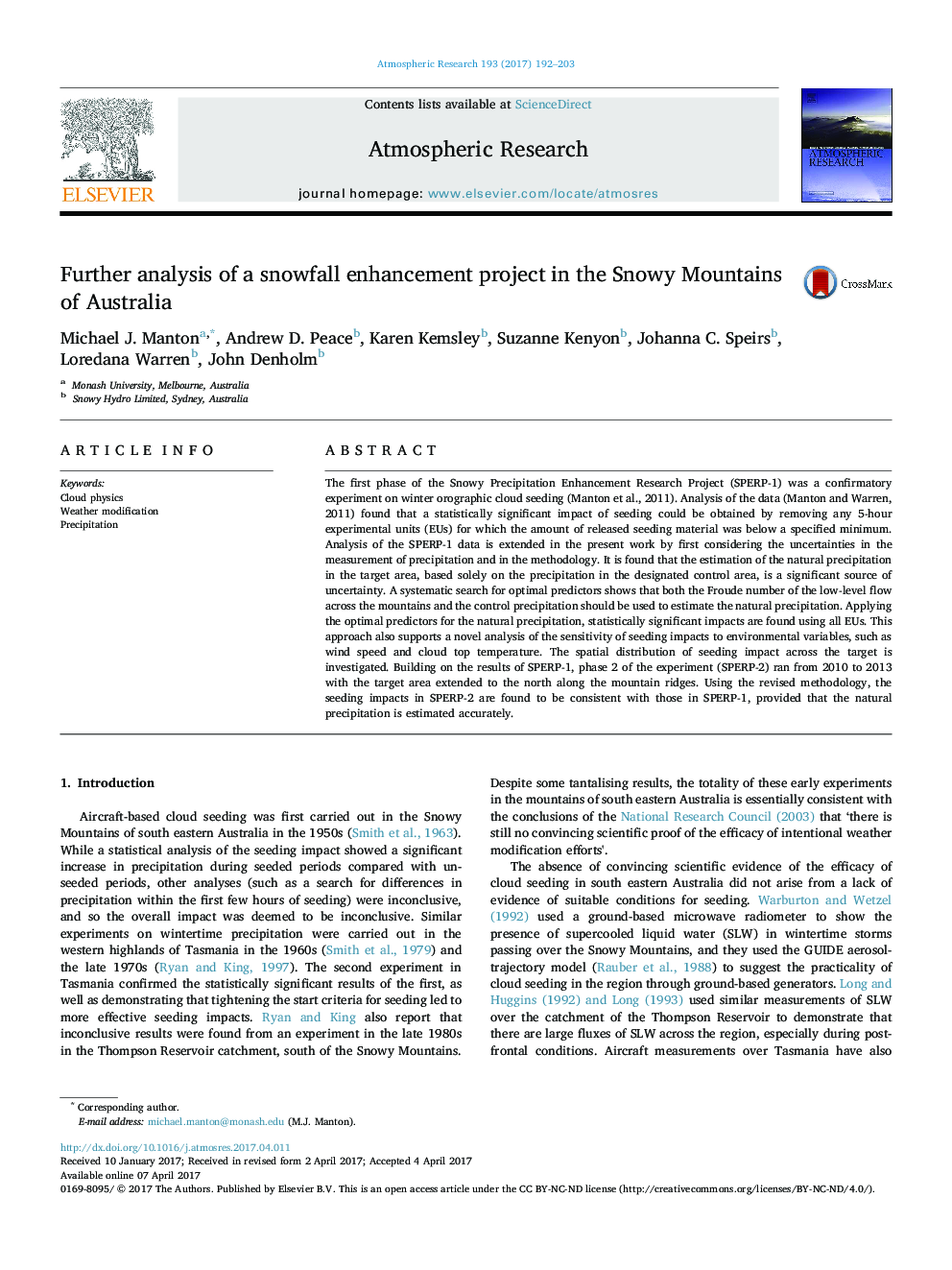| Article ID | Journal | Published Year | Pages | File Type |
|---|---|---|---|---|
| 5753647 | Atmospheric Research | 2017 | 12 Pages |
Abstract
The first phase of the Snowy Precipitation Enhancement Research Project (SPERP-1) was a confirmatory experiment on winter orographic cloud seeding (Manton et al., 2011). Analysis of the data (Manton and Warren, 2011) found that a statistically significant impact of seeding could be obtained by removing any 5-hour experimental units (EUs) for which the amount of released seeding material was below a specified minimum. Analysis of the SPERP-1 data is extended in the present work by first considering the uncertainties in the measurement of precipitation and in the methodology. It is found that the estimation of the natural precipitation in the target area, based solely on the precipitation in the designated control area, is a significant source of uncertainty. A systematic search for optimal predictors shows that both the Froude number of the low-level flow across the mountains and the control precipitation should be used to estimate the natural precipitation. Applying the optimal predictors for the natural precipitation, statistically significant impacts are found using all EUs. This approach also supports a novel analysis of the sensitivity of seeding impacts to environmental variables, such as wind speed and cloud top temperature. The spatial distribution of seeding impact across the target is investigated. Building on the results of SPERP-1, phase 2 of the experiment (SPERP-2) ran from 2010 to 2013 with the target area extended to the north along the mountain ridges. Using the revised methodology, the seeding impacts in SPERP-2 are found to be consistent with those in SPERP-1, provided that the natural precipitation is estimated accurately.
Related Topics
Physical Sciences and Engineering
Earth and Planetary Sciences
Atmospheric Science
Authors
Michael J. Manton, Andrew D. Peace, Karen Kemsley, Suzanne Kenyon, Johanna C. Speirs, Loredana Warren, John Denholm,
